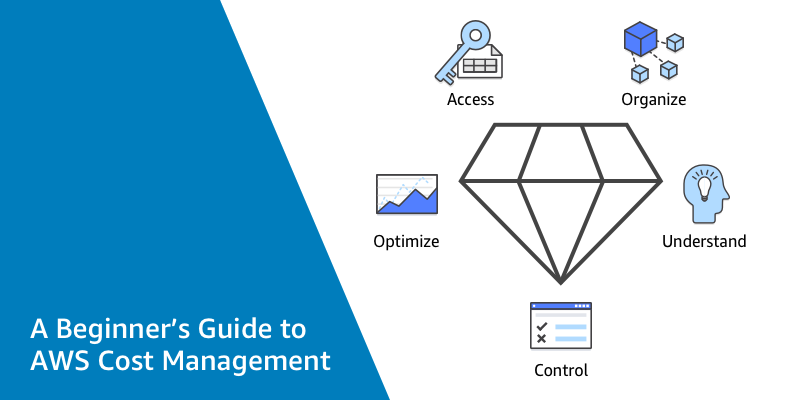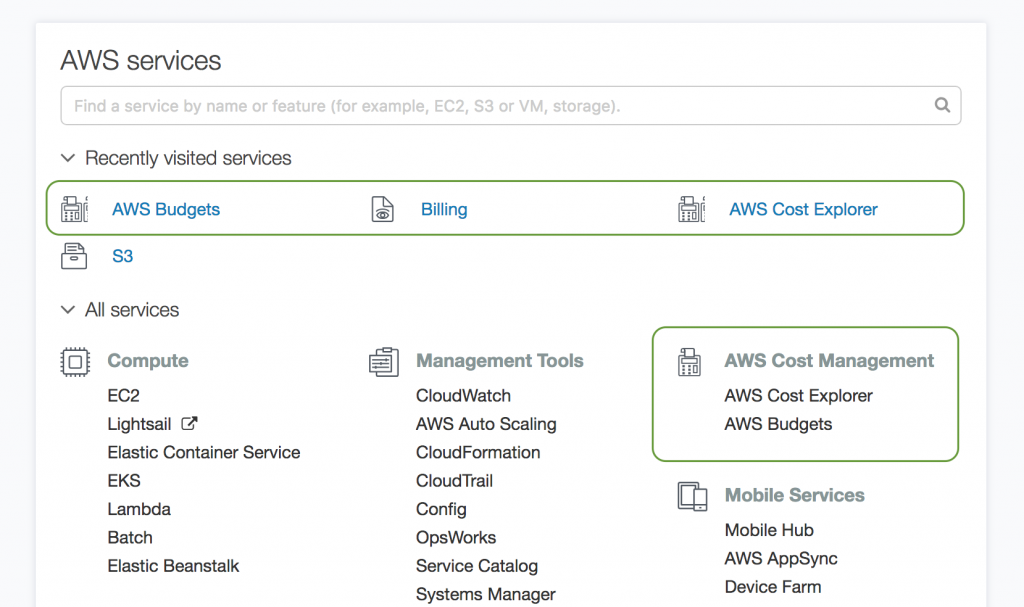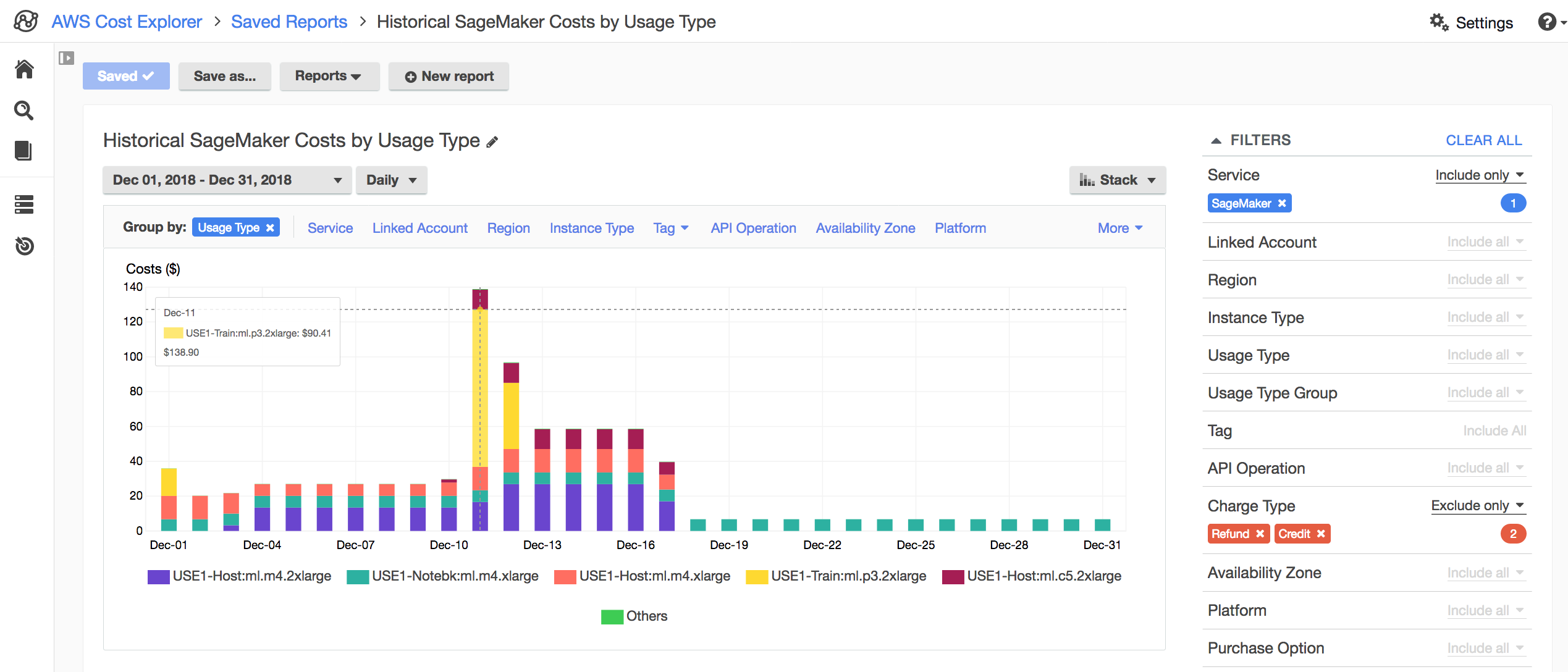AWS Cloud Financial Management
A Beginner’s Guide to AWS Cost Management

Moving to the Cloud has changed the way that organizations relate to, and account for, their costs. With the advent of pay-as-you-go pricing, decentralized resource procurement, and a wider breadth of product functionality than ever before, organizations had to change the way they approached their IT-based financial processes.
The AWS Cost Management product suite gives you the ability to access, organize, understand, control, and optimize your cloud-based costs and usage. This post provides you with a high-level conceptual map for managing your AWS costs and usage, and I will dive deeper into each category in future posts.
Accessing your AWS cost and usage information
AWS Cost Management products are accessible directly through links in the AWS services menu on the AWS Management Console, as well as via the AWS Billing & Cost Management console. The console can be accessed from the following locations:

When you access the console, there are a number of ways to manage your costs. The first thing I recommend is visiting AWS Cost Explorer and signaling that you would like your cost and usage data to be available for analysis. This process can take up to 24 hours. In the meantime, you can explore the rest of the console (for example, the Bills page).
Organizing your AWS implementation for cost management
When you have a feel for the Billing & Cost Management console, you can review how your AWS implementation is organized. Oftentimes, this means reviewing how your accounts are structured and your organization’s tagging strategy. For example, if you have multiple accounts, they may be organized into a consolidated billing family. If you have multiple environments or projects running on top of AWS, they may be tracked using resource tags.
To learn more about strategies for organizing your accounts, see Back-to-Basics Guide for Consolidating AWS Accounts to Manage Costs at Scale. To learn more about best practices when applying tags to your resources, see AWS Tagging Strategies.
Understanding your cost drivers and usage patterns
The AWS Cost Management product suite provides numerous ways to help you understand and dive deep into your costs and usage. The best way to get started is to enable and use AWS Cost Explorer. It has an easy-to-use interface that lets you visualize, understand, and manage your AWS costs and usage over time.
You can get started quickly by exploring your data (in chart and tabular format) at a high level (for example, total costs and usage across all accounts). From there, you can create highly specific requests (for example, m2.2xlarge costs within account Y with the “project: secretProject” tag applied). You can save your progress as a custom report at any time.

You can examine your costs broken out by specific accounts or tags using the filtering and grouping capabilities shown in the screenshot. To learn more, see the AWS Cost Explorer webpage.
If your organization requires granular information about costs and usage, or to craft a custom charge-back or show-back strategy, then enable the AWS Cost & Usage Report. The Cost & Usage Report contains the most comprehensive set of AWS cost and usage data available. It includes additional metadata about AWS services, pricing, and reservations (for example, Amazon EC2 Reserved Instances). To learn more about the benefits, see The AWS Cost & Usage Report: The Next Step on Your Cost Management Journey.
Controlling your costs and usage using AWS Budgets
When you have a good sense of your usage patterns and cost trends, you could decide to set budgets on your overall spending and other key cost dimensions. AWS Budgets gives you the ability to set custom budgets that alert you when you exceed (or are forecasted to exceed) your budget thresholds.
To start, I recommend creating a total monthly cost budget so that you can begin monitoring your costs via email or Amazon SNS. From there, you can dive deeper using the same filters that you see in AWS Cost Explorer to set budgets based on more specific use cases. After your budgets have been created, you can then monitor them using the Budgets dashboard (pictured below).

To learn more, see the AWS Budgets webpage. Try out the product yourself by completing the Control your AWS costs with the AWS Free Tier and AWS Budgets tutorial.
Optimizing your costs and usage
AWS Cost Explorer, AWS Budgets, and the AWS Cost & Usage Reports help you identify opportunities for cost optimization. To unlock cost savings, many customers also choose to purchase AWS reservations. Reservations offer a discounted hourly rate (sometimes up to 75%) compared to On-Demand Instance usage, in exchange for committing to a one– or three-year term of service usage. This can translate into significant savings.
To help you manage and monitor your reservations, AWS provides a number of cost management tools. They help your finance, DevOps, and other business users get access to information about the savings that your organization has received by purchasing reservations. This functionality is available throughout the AWS Cost Management suite.
One useful feature found within Cost Explorer is reservation purchase recommendations. You can refine the recommendations shown and align to your organization’s reservation purchasing patterns by specifying your desired term length, payment option, and more.

To learn more, see the Reservation Reporting webpage or Managing Your Cost Savings with Amazon Reserved Instances.
Conclusion
The AWS Cost Management product suite lets you quickly get started accessing, organizing, understanding, controlling, and optimizing your costs and usage. To learn more about the AWS Cost Management suite, see the AWS Cost Management detail page or the AWS Billing and Cost Management User Guide.